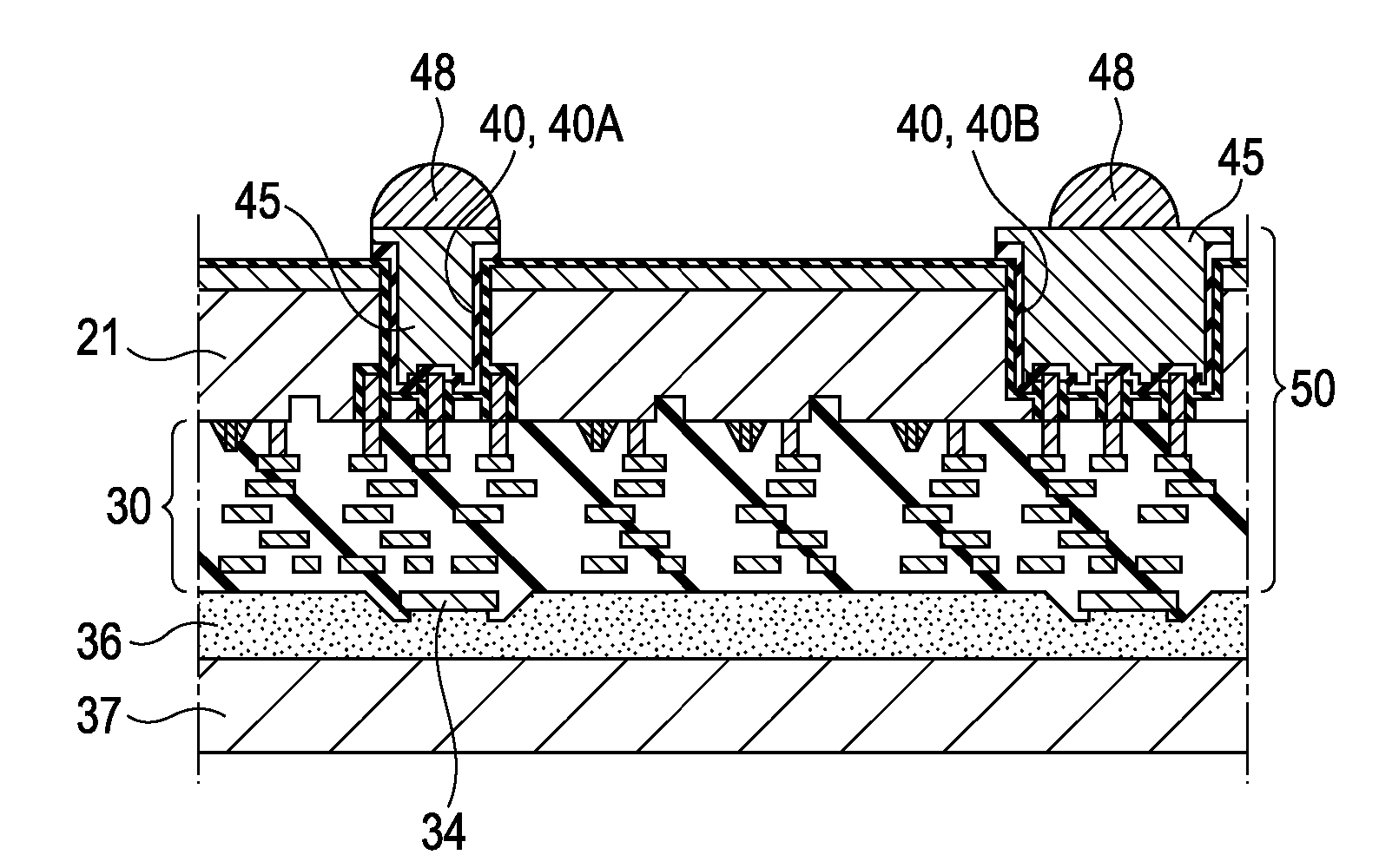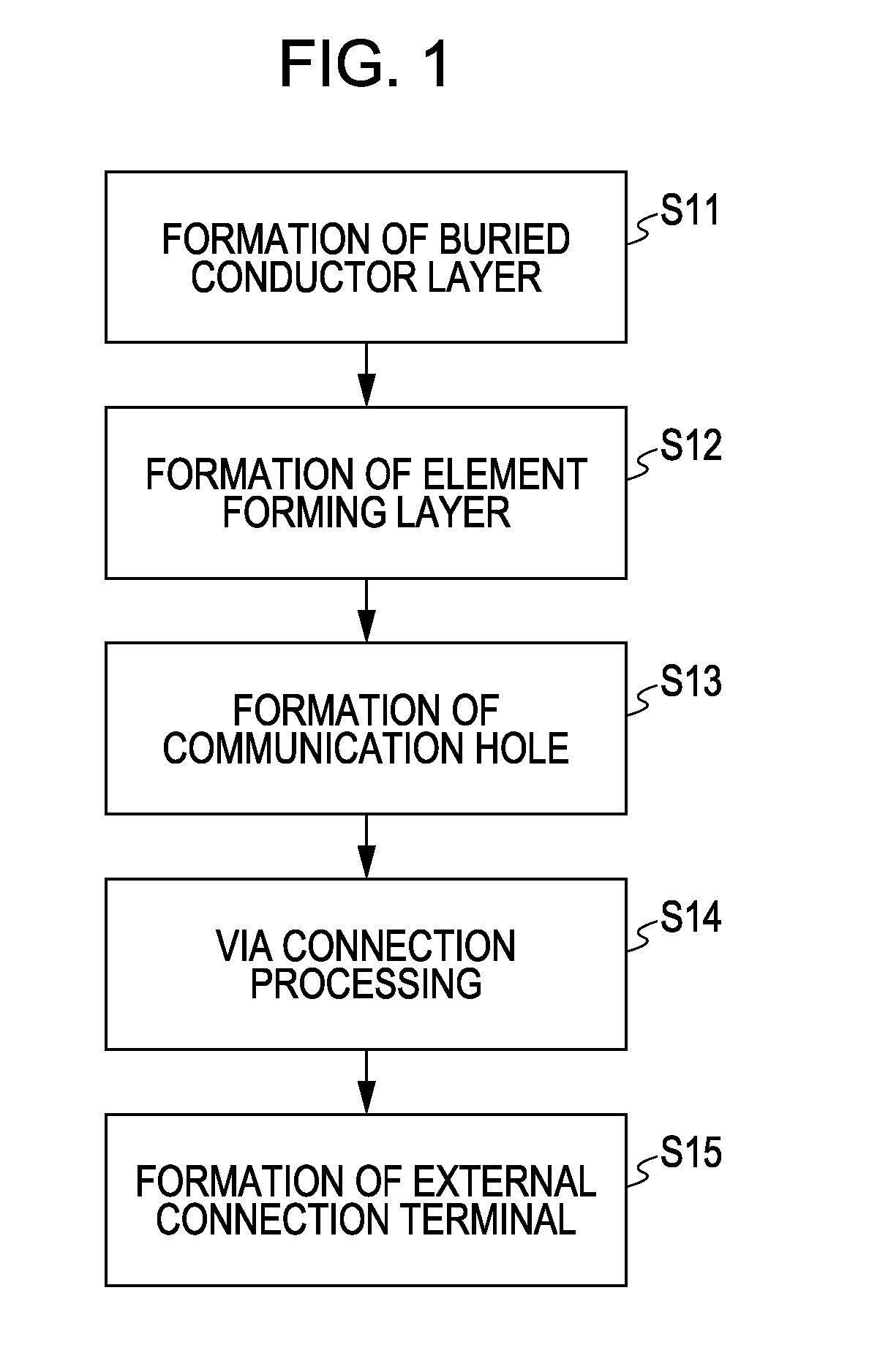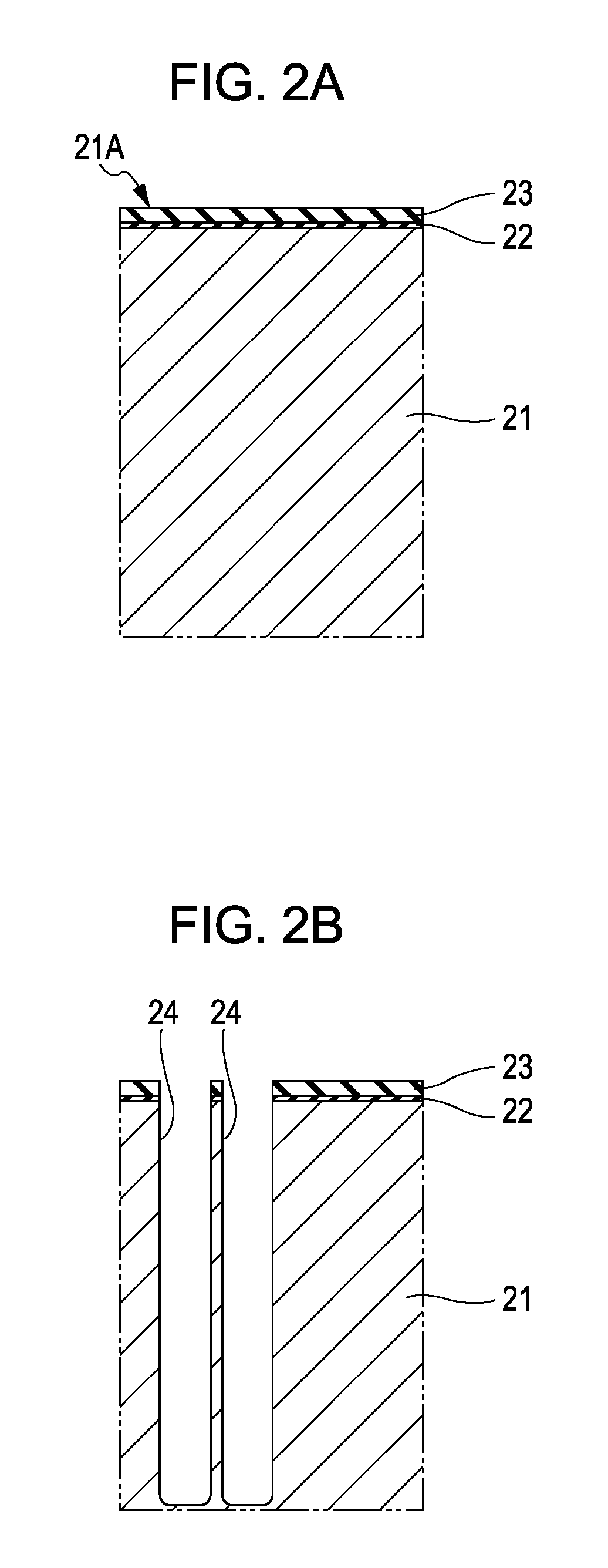Method for manufacturing semiconductor device and semiconductor device
a semiconductor device and semiconductor technology, applied in semiconductor devices, semiconductor/solid-state device details, electrical apparatus, etc., can solve problems such as power supply and transmission speed problems, wafer cracking, and failure to achieve desired element characteristics in some cases, so as to prevent substrate cracking and improve workability and productivity.
- Summary
- Abstract
- Description
- Claims
- Application Information
AI Technical Summary
Benefits of technology
Problems solved by technology
Method used
Image
Examples
first embodiment
[0049]FIG. 1 is a flowchart illustrating a method for manufacturing a semiconductor device according to a first embodiment of the present invention. The method for manufacturing a semiconductor device of this embodiment includes the steps of forming buried conductor layers on one (first surface) of the surfaces of a semiconductor substrate (S11), forming an element forming layer including semiconductor elements such as transistors, wiring, various insulating layers, electrode pads, etc. on the first surface of the semiconductor substrate (S12), forming communication holes in the other surface (second surface) of the semiconductor substrate so that the communication holes communicate with the buried conductor layers (S13), electrically connecting the buried conductor layers and the communication holes (S14), and forming external connection terminals on the second surface of the semiconductor substrate (S15).
Step of Forming Buried Conductor Layer
[0050]FIGS. 2A, 2B, and 3C to 3E are se...
second embodiment
[0087]FIG. 11 is a flowchart illustrating a method for manufacturing a semiconductor device according to a second embodiment of the present invention. The method for manufacturing a semiconductor device of this embodiment includes the steps of forming an element forming layer on a first surface of a semiconductor substrate (S21), forming buried conductor layers on the first surface of the semiconductor substrate through the element forming layer (S22), forming communication holes in the second surface of the semiconductor substrate so that the communication holes communicate with the buried conductor layers (S23), electrically connecting the buried conductor layers and the communication holes (S24), and forming external connection terminals on the second surface of the semiconductor substrate (S25).
[0088]In other words, in the first embodiment, the step of forming buried conductor layers is performed before the step of forming an element forming layer. However, this embodiment is di...
PUM
 Login to View More
Login to View More Abstract
Description
Claims
Application Information
 Login to View More
Login to View More - R&D
- Intellectual Property
- Life Sciences
- Materials
- Tech Scout
- Unparalleled Data Quality
- Higher Quality Content
- 60% Fewer Hallucinations
Browse by: Latest US Patents, China's latest patents, Technical Efficacy Thesaurus, Application Domain, Technology Topic, Popular Technical Reports.
© 2025 PatSnap. All rights reserved.Legal|Privacy policy|Modern Slavery Act Transparency Statement|Sitemap|About US| Contact US: help@patsnap.com



